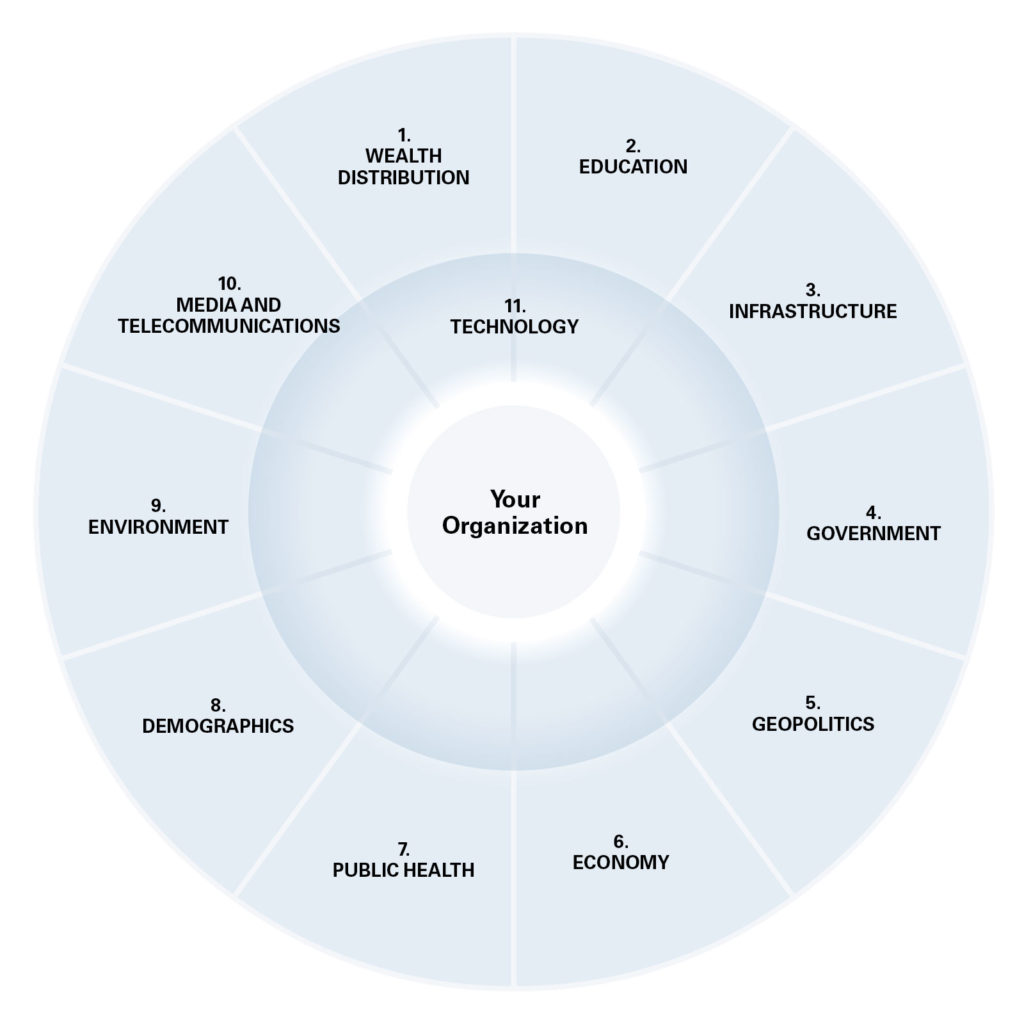Controllers are often tasked with keeping the lights on. Strategic plans often get taken on by the CFO, and your job is all about steering the ship. However, this mentality, while necessary for your role and company success, is one that can leave you blindsided when disruption happens.
Decision windows are shorter—even in the strategic landscape—and even if your strength is in ensuring there’s enough cash around for strategic decisions, you always need to be on the lookout for disruption. After all, getting blindsided impacts your cash flow, meaning that if your company fails to see what’s on the horizon, you can’t do your own job.
Avoiding Unknowns by Listening for Signals
Luckily, a recent MIT Sloan Article explored the biggest and most pressing sources of disruption that could impact any business. Titled The 11 Sources of Disruption Every Company Must Monitor, the article explored how to broaden your lens in order to help you firm remain competitive.
The Vulnerabilities Created by Using a Narrow Scope
Author Amy Webb noted that too often, companies get buried in the well-known concepts and failed to look for ‘weak signals’ that could one day end up amplified—after all, if you’re reading this in 2020, you already know how fast things can go from common to novel.
“When faced with deep uncertainty, teams often develop a habit of controlling for internal, known variables and fail to track external factors as potential disrupters. Tracking known variables fits into an existing business culture because it’s an activity that can be measured quantitatively.
This practice lures decision makers into a false sense of security, and it unfortunately results in a narrow framing of the future, making even the most successful organizations vulnerable to disruptive forces that appear to come out of nowhere. Failing to account for change outside those known variables is how even the biggest and most respected companies get disrupted out of the market.”
11 Sources for Disruption to Watch
Disruption and uncertainty can come from anywhere. Pair this with technological innovation, and any one of these can change the game seemingly overnight. What should you be on the lookout for?
- Wealth distribution: the distribution of income across a population’s households, the concentration of assets in various communities, the ability for individuals to move up from their existing financial circumstances, and the gap between the top and bottom brackets within an economy.
- Education: access to and quality of primary, secondary, and postsecondary education; workforce training; trade apprenticeships; certification programs; the ways in which people are learning and the tools they’re using; what people are interested in studying.
- Infrastructure: physical, organizational, and digital structures needed for society to operate (bridges, power grids, roads, Wi-Fi towers, closed-circuit security cameras); the ways in which the infrastructure of one city, state, or country might affect another’s.
- Government: local, state, national, and international governing bodies, their planning cycles, their elections, and the regulatory decisions they make.
- Geopolitics: the relationships between the leaders, militaries, and governments of different countries; the risk faced by investors, companies, and elected leaders in response to regulatory, economic, or military actions.
- Economy: shifts in standard macroeconomic and microeconomic factors.
- Public health: changes occurring in the health and behavior of a community’s population in response to lifestyles, popular culture, disease, government regulation, warfare or conflict, and religious beliefs.
- Demographics: observing how birth and death rates, income, population density, human migration, disease, and other dynamics are leading to shifts in communities.
- Environment: changes to the natural world or specific geographic areas, including extreme weather events, climate fluctuations, rising sea levels, drought, high or low temperatures, and more. Agricultural production is included in this category.
- Media and telecommunications: all of the ways in which we send and receive information and learn about the world, including social networks, news organizations, digital platforms, video streaming services, gaming and e-sports systems, 5G, and the boundless other ways in which we connect with each other.
- Technology: not as an isolated source of macro change, but as the connective tissue linking business, government, and society. We always look for emerging tech developments as well as tech signals within the other sources of change.

Think of it like this: Public schools were woefully unprepared for the impact of the Coronavirus outbreak (factor 7). Disruptive options like online charter schools (factors 2, 10) were able scale up technology to deliver necessary education for students free of charge. Next year, these platforms will be able to bring in more students after the COVID-19 outbreak ends.
Now, think of how any of these could impact you. Unlike public schools, you don’t have the government on your side to ban the use of your competition. This is disruption in action. Outdated business models collapse and innovative ones can take over.
Webb notes, “It might go against the established culture of your organization, but embracing uncertainty is the best way to confront external forces outside your control. Seeking out weak signals by intentionally looking through the lenses of macro change is the best possible way to make sure your organization stays ahead of the next wave of disruption. Better yet, it’s how your team could find itself on the edge of that wave, leading your entire industry into the future.”
Planning for Disruption, Growing Your Skills
At the Controller’s Council, we keep an eye on the challenges and changes that impact you. Get to know more about us and learn how you can join here.




